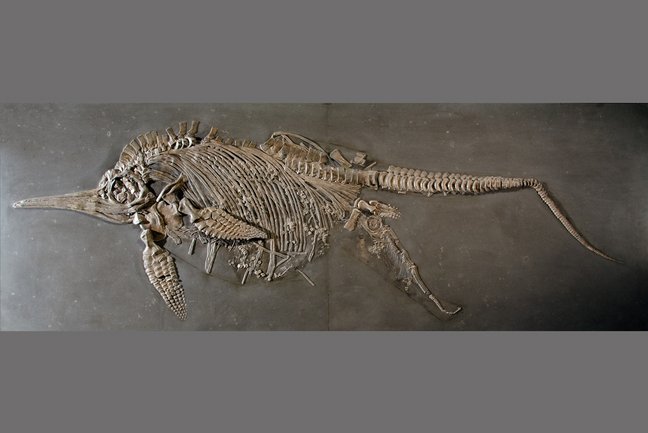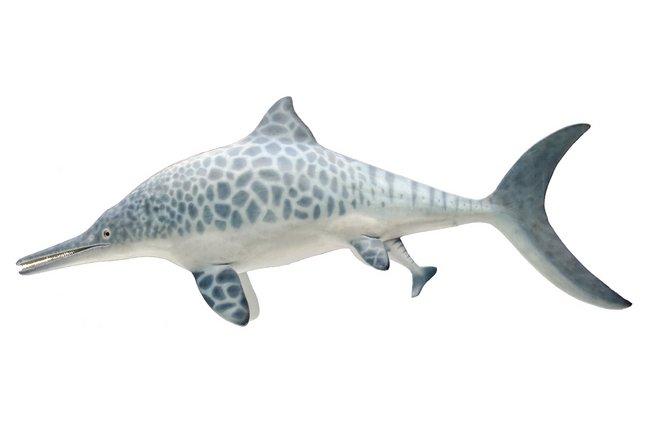We have known that ichthyosaurs gave birth to live young since the 1800s. At the SMNS in Stuttgart we have several beautiful examples of pregnant ichthyosaurs, all belonging to the genus Stenopterygius. One of our specimens, on display in the permanent palaeontological exhibition, even shows a fetus coming out of the birth canal! Based on that specimen and others preserved in utero, it was long assumed that all ichthyosaurs gave birth tail-first. The explanation given was usually that if a head-first birth would be the case, the fetus would have a high risk of drowning during the birth. In 2014 a specimen of the early ichthyosaur Chaohusaurus from China was also found to be pregnant. However, the fetuses were in clear head-first position. This prompted the authors to hypothesize that this was the ancestral birth condition and that ichthyosaur ancestors on land would therefore already be viviparous. More recently in 2020 a pregnant specimen of an ichthyosaur more adapted to an open-ocean environment called Cymbospondylus was published. It also showed a fetus in utero in a position suggesting head-first birth.
All this prompted us ((Feiko Miedema and Erin Maxwell from the Natural History Museum Stuttgart and other colleagues from other institutions) to study birth preference in the early ichthyosaur Mixosaurus. We looked at 3 pregnant females of this genus, all coming from the famous Middle Triassic fossil lagerstätten of Monte san Giorgio in Ticino, Switzerland. Mixosaurus shows one specimen with head-first birth and two with tail-first birth.
We then took a deeper look at birth position in Stenopterygius. It turns out although tail-first birth is preferred, head-first births do occur on a regular basis. Moreover, we reviewed birth position in modern and extinct animals that give live birth and we found that head-first and tail-first birth occur regardless of the medium in which the fetus is born, whether on land or under water. This means that there is unlikely to be a large risk of drowning for the fetus while being born head-first in the water as previously thought. Instead, we suggest that tail-first births occur in streamlined forms like ichthyosaurs or dolphins because this makes it easier for the mother to push out the fetus than head-first birth. Alternatively, this in utero position could help the mother have a better weight distribution while swimming (trim control) during pregnancy.
Finally, we conclude that the tail-first birth in ichthyosaurs evolved later in their evolutionary history and that Triassic forms either had no preference or possibly a head-first preference.
26.04.2023
Heads or tails first? New insights into fetal orientation in ichthyosaurs
Science News

